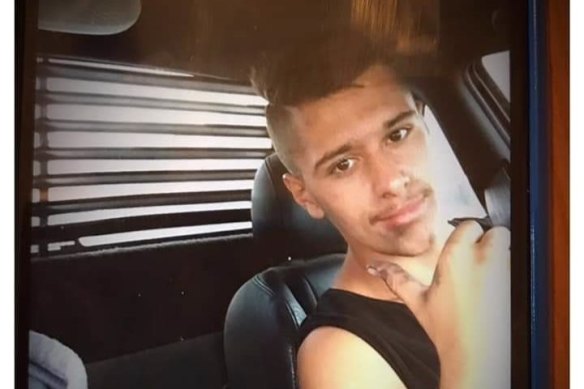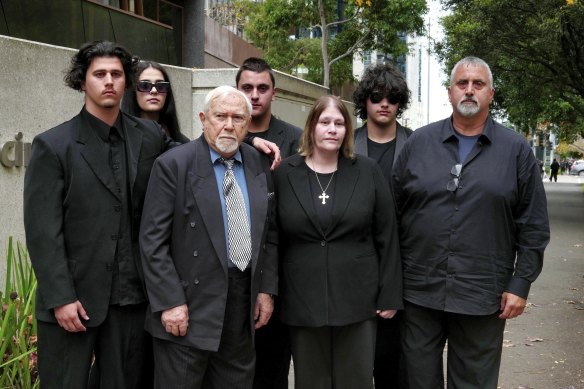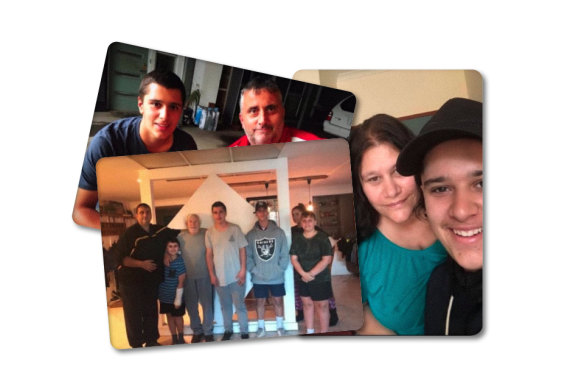This was published 10 months ago
Boxer’s death may have been preventable: coroner
Vic Diamond has agonised over one question in the years since his son suffered a fatal brain haemorrhage and collapsed in a suburban boxing gym: Would his son still be alive if he had had a CT scan?
George Diamond died in 2019, four months after suffering a concussion caused by being repeatedly hit in the head in the boxing ring.

George Diamond died in February 2019.
On Monday, after an inquest into the 18-year-old’s death, Victorian Coroner John Cain found a failure by doctors to order a CT scan after George sustained a concussion at Sting Gym in Cranbourne West in October 2018 was a missed opportunity that could have saved his life.
“It is more likely than not it would have revealed that George had a subdural haematoma,” Cain wrote in his findings. “I find that this was a missed opportunity to prevent George’s death.”
Cain said if George and his family had been aware the apprentice builder was suffering an ongoing severe head injury, he never would have returned to sparring or boxing.
The finding was both devastating and vindicating for George’s father.
Diamond had taken George to Frankston Hospital after becoming alarmed his son was still experiencing vomiting, headaches and dizziness 10 days after he was doubled over and concussed following a hit to the groin and repeated hits to the head at Sting Gym.
“I begged the doctor at Frankston Hospital twice to do a CT scan on my son,” Diamond said.
“But I was told I was being overprotective; it was unnecessary. This finding is vindicating, but also so hurtful because it shows that this was all so preventable.”
The teenager, from Pearcedale in Melbourne’s south-east, died in The Alfred hospital in February 2019.

The family of George Diamond (back row (L-R) George’s sister Eva, brothers Christian and Isiah, front row (L-R) another brother Perry, grandfather George, mum Shayla and dad Vic. Credit: LUIS ENRIQUE ASCUI
An autopsy found evidence of old and new subdural haemorrhage, where blood pools between the surface of the brain and the skull.
Cain called for the development of new national guidelines to treat patients with head injuries resulting from potentially dangerous mechanisms, such as being struck in the boxing ring.
It is a move backed by George’s family, who described the last five and half years as “absolute torture” and said they wanted to prevent other families from enduring what they have.
“I believe that if you suffer a concussion during boxing it should be a mandatory that a CT scan is done,” Diamond said.
Cain said new national guidelines should be drawn up by the Neurosurgical Society of Australasia, Royal Australian College of General Practitioners and the Australasian College of Emergency Medicine, and highlight the need for potentially life-saving scans for head injuries, which may fall outside the Canadian CT head injury rule.
The CT head injury rule is a method used globally to identify patients at risk of serious head injury and help doctors decide whether they should order a CT scan or MRI.
Cain said new guidelines must emphasise the importance of CT scans and MRIs when a brain injury occurs in high-risk settings, such as boxing rings or in mixed martial arts.
The coroner also called for mandatory training of all medical practitioners, including GPs, who are often responsible for clearing patients to return to playing sport.
The inquest was previously told GP Pejman Hajbabaie medically cleared George to return to boxing on January 25, 2019.

The teen’s family have launched legal action against the gym.
But Cain found Hajbabaie should not have signed the form without a comprehensive review of George’s medical history and without undertaking research as to what was involved in providing a medical clearance to return to boxing. This included an examination of the ongoing risks of a recent concussion in a sport such as boxing.
Diamond said his son’s death had irrevocably changed the lives of those who loved him.
George’s mum suffered a heart attack after her son’s death which Diamond attributes to broken heart syndrome: a heart condition brought on by stressful situations and extreme emotions.
“George’s death has completely destroyed us,” Diamond said.
Diamond said George had supported several of his friends experiencing severe mental health issues.
“George was an amazing young man. He loved life, he loved helping people.”
Cain said a CT scan for George should have been ordered when he arrived at Frankston Hospital on November 5.
He said that if emergency department physician Dr Yigal Reuben, who examined George at the hospital, did not believe the ED was an appropriate place for a CT scan, then he should have referred the teenager to his GP for one.
Reuben diagnosed George with a concussion and told the inquest last year he had provided the teen with advice on how to manage his head injury. Hospital notes said Reuben warned George against playing sport while in this condition.
But Reuben did not believe George’s symptoms – including vomiting that morning, back pain, dizziness and headaches – warranted a CT scan at the time.
Cain also recommended a review of the regulatory structure of the Victorian Amateur Boxing League to examine ways it could do more to reduce concussion risks.
George’s family are suing Sting Gym, alleging it operated without the oversight of anyone trained in concussion management and without procedures for dealing with concussion.
Sting Gym has been contacted for comment.
Start the day with a summary of the day’s most important and interesting stories, analysis and insights. Sign up for our Morning Edition newsletter.